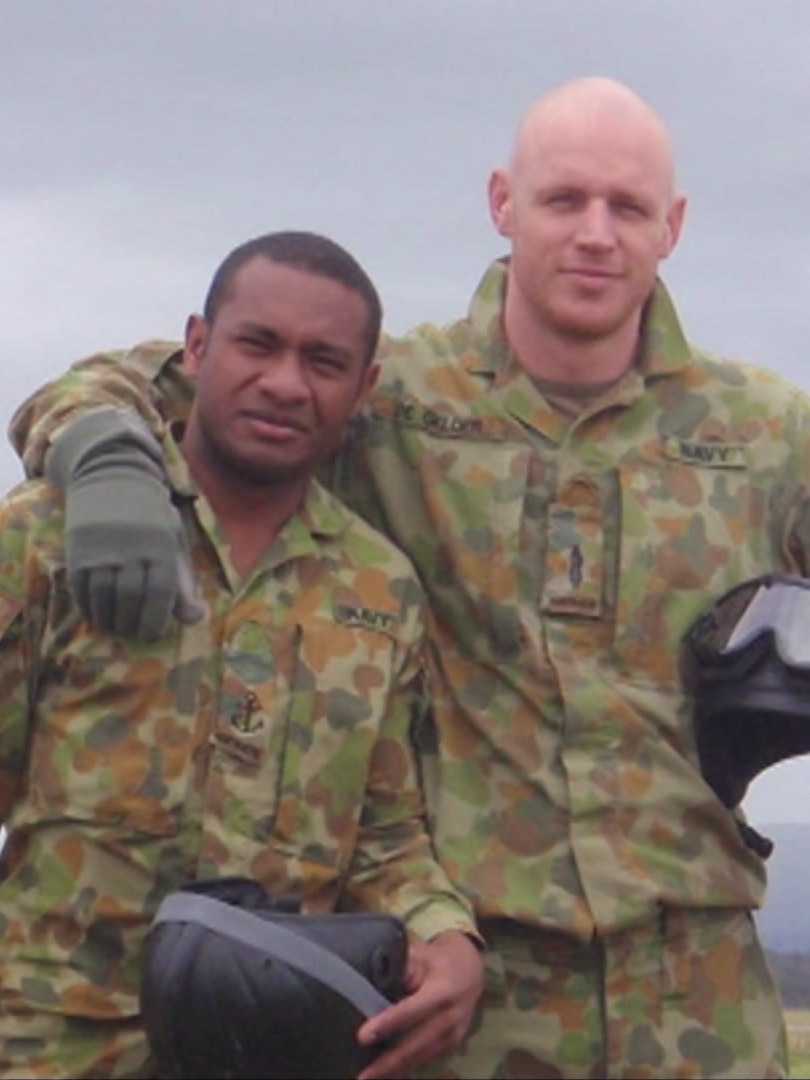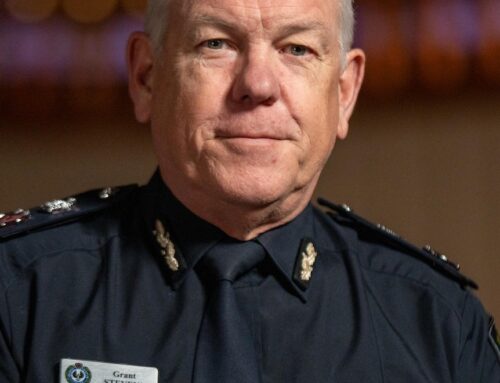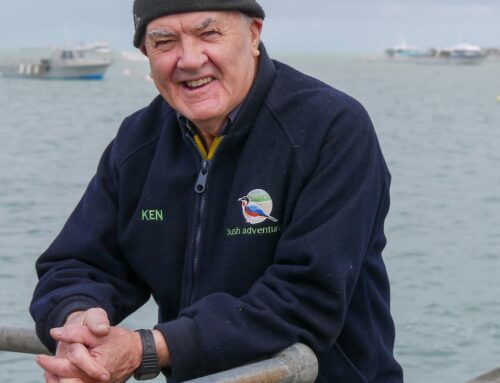Former navy clearance divers have criticised a lack of support from the Australian Defence Force (ADF) to the Royal Commission into Defence and Veteran Suicide after a near-fatal shark attack in Sydney Harbour.
Key points:
- Paul de Gelder suffered horrific injuries when he was attacked by a bull shark during a counter-terrorism exercise
- One diver said he never received support from the ADF following the confronting task of cleaning up human remains
- He said there was a culture of “putting your head in the sand” and ignoring or even denying any problems
Warning: This story contains graphic details.
In 2009, clearance diver Paul de Gelder suffered horrific injuries to one of his arms and legs when he was attacked by a bull shark during a counter-terrorism exercise in Sydney Harbour.
Former clearance diver Jeremy Thomas was the supervisor on the dive boat that day and helped save Mr de Gelder’s life.
“I heard a scream, which was quite benign, and my initial thought was he had a cramp or something of that nature,” he said.
“When I saw Paul eventually come to the surface, I could see there was a struggle with the shark and what presented was a swathe of red water, which looked as if it enveloped the whole of Sydney Harbour.
“His body looked as if it was cut in two.”
Mr Thomas said once he and another colleague pulled Mr de Gelder onto the boat to apply first aid, he discovered there was no tourniquet included in the medical kit to stop the severe haemorrhage caused by the shark’s bite to his leg.
“We then used our jackets, three jackets,” he said.
“The hole within his leg absorbed the three jackets and then we used a life jacket to create a splint.”
Mr Thomas said he was told by Mr de Gelder’s surgeon that if he had lost blood for 30 seconds longer that day, he would have died.
Mr de Gelder now has a prosthetic hand and leg as a result of the attack.
Another clearance diver, Ashley Semmens, was tasked with the “aftermath” of the attack.
“There was some level of remnants left from that attack being human remains, so I cleaned up that area to make it ready to use again,” he said.
“Effectively, that’s our role, it doesn’t matter if something catastrophic happens, you have to be ready to go and conduct that task all over again.”
Former diver left with ‘significant’ fear of the water
Mr Semmens, who was later diagnosed with post traumatic stress disorder and depression after leaving the navy, said he never received support from the ADF following the confronting task.
“At the time, I sort of compartmentalised it as this needs to be done to continue the work that we were doing,” he said.
“It wasn’t until some time after that it had a longer-term effect on me.
“It wasn’t until I left defence and sort of self referred and went down the process of exploring the ‘hangover’, for lack of a better word, that I was living from that experience.
“To this day, I have a significant fear of the water.”
The former chief staff officer of the clearance diving group, Michael Maley, said he was interviewed by Comcare when it conducted an investigation about the shark attack.
“They looked at what actually saved Paul’s life, which was the tourniquet, the medical training and the high level of training of the divers onsite.”
As a result, two recommendations were made to the navy which included the implementation of a combat tourniquet in all first aid kits on dive boats as well as the reinstatement of diver medical technician courses.
However, the recommendations were overridden by the fleet medical officer, who concluded that it was more dangerous to have “unqualified” people using tourniquets.
“I felt let down, that I was not in a position to be able to make the dive site safe 100 per cent in accordance with objective evidence that had been offered to us,” Mr Maley said.
Culture of ‘putting your head in the sand’
In 2021, the Navy Clearance Diver Trust made a submission to the royal commission after three members of its community died by suicide within 18 months.
Their submission raised concerns about the high levels of physical injury and medical discharge, service-related mental health issues and self-harm amongst its members.
Mr Semmens said during his service, there was a culture of “putting your head in the sand” and ignoring or even denying any problems.
“There was definitely a reluctance to disclose any sort of injury, whether that’s moral, physical or mental, due to the fear of professional repercussions such as losing pay or losing our careers,” he said.
“You are simply a number and you will be replaced very quickly.”
Mr Semmens said his desire to ensure his former colleagues still serving were safe is what compelled him to make a submission to the commission.
“I’d like to see an honest and open education package around physical and mental injuries,” he said.
“Ensure these people know where to go and what mechanisms are out there and clearly articulate to them it’s not going to be the end of their career.”




